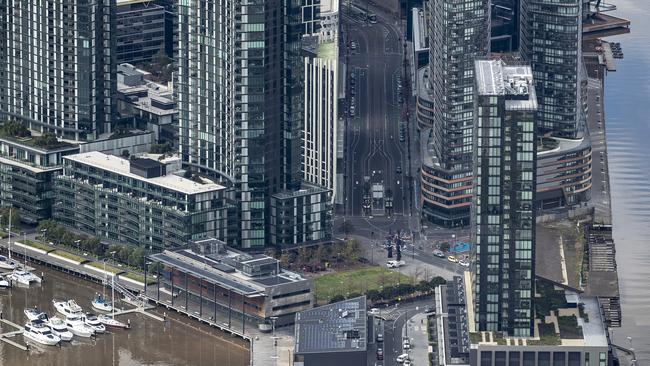Coronavirus and creative disruption
The global pandemic has changed the narrative of urban life.

In his 2002 bestseller The Rise of the Creative Class, American academic Richard Florida argued that economic growth was stimulated by the clustering in particular cities of knowledge workers – people with a university degree or some kind of technical or specialist training. The “urbanist” cited Austin, Texas and Portland, Oregon as examples of this phenomenon.
The logic was that the frisson created by a critical mass of creative types would lead to innovation, entrepreneurship and by extension economic growth. Politicians loved the concept: cramming people into the inner city would stimulate the economy without too much investment in public infrastructure; it was more efficient than extending the urban fringe, which invariably prompted demands for freeways, railways, hospitals and schools. Sprawl bad, density good – that was the thinking.
Meanwhile, other forces began to make a contribution to the broader glorification of the inner city. Down-shifting baby boomers sold their suburban homes and bought up smart new apartments in lifestyle precincts near the CBD. University educated 20-somethings lingered in the inner city long after graduation, contributing to the genesis of a new lifeform known as the hipster.
The hipster cycled into prominence soon after the 2008 global financial crisis, and settled within the confines of what I call the Goat’s Cheese Curtain, an imaginary line encircling the city centre at a radius of about 5km. Beyond this curtain there be suburbs and commuters and everyday Australians.
A surge of foreign students and tourists delivered yet more “markets”, all clamouring for a piece of the inner city. In this world of aspiration, skilled work, global travel and seemingly boundless prosperity, personal living space – notably the home – took on the hue of a swish hotel. Scandinavian minimalism was all the go, and it suited the zeitgeist; you can’t be a collector of knick-knacks, bric-a-brac and whatnots if you’re living in a one-bedroom apartment. And to be fair, if you spend most days in an office and after work you’re in restaurants or gyms, and every few weeks you’re jetting off for a well-earned break at a tropical resort, then you kinda expect your home to be as sleek as these places. I see a direct line between the thesis of Florida’s book and the minimalism so favoured by interior design mavens.
All of these elements worked together to create a network of knowledge-worker precincts in places such as Melbourne’s Fitzroy and Sydney’s Surry Hills, which in some ways look remarkably like London’s Shoreditch and New York’s West Village.
The problem is that the global pandemic changes this narrative of urban life; it erodes the idea of density, the bedrock upon which the “creative class” concept is based. Even if a vaccine emerges soon, the threat of another contagion will gnaw away at the back of people’s minds. Close-seated cafes, lifts, the cosmopolitan jumble of inner-city life – all are now regarded as a liability, as a threat.
The creative class now associates density with infection and will seek out alternative arrangements – perhaps in the suburbs or the regions. For those with families, the home must expand to accommodate more people working more often from home. Suddenly, minimalism seems sterile and inadequate; the home-as-fortress movement has arrived. The inner-city has had a good run, but it’s time for a new narrative: one that’s likely to be more focused on community, relationships, family. And in the long run, we may all benefit.




To join the conversation, please log in. Don't have an account? Register
Join the conversation, you are commenting as Logout